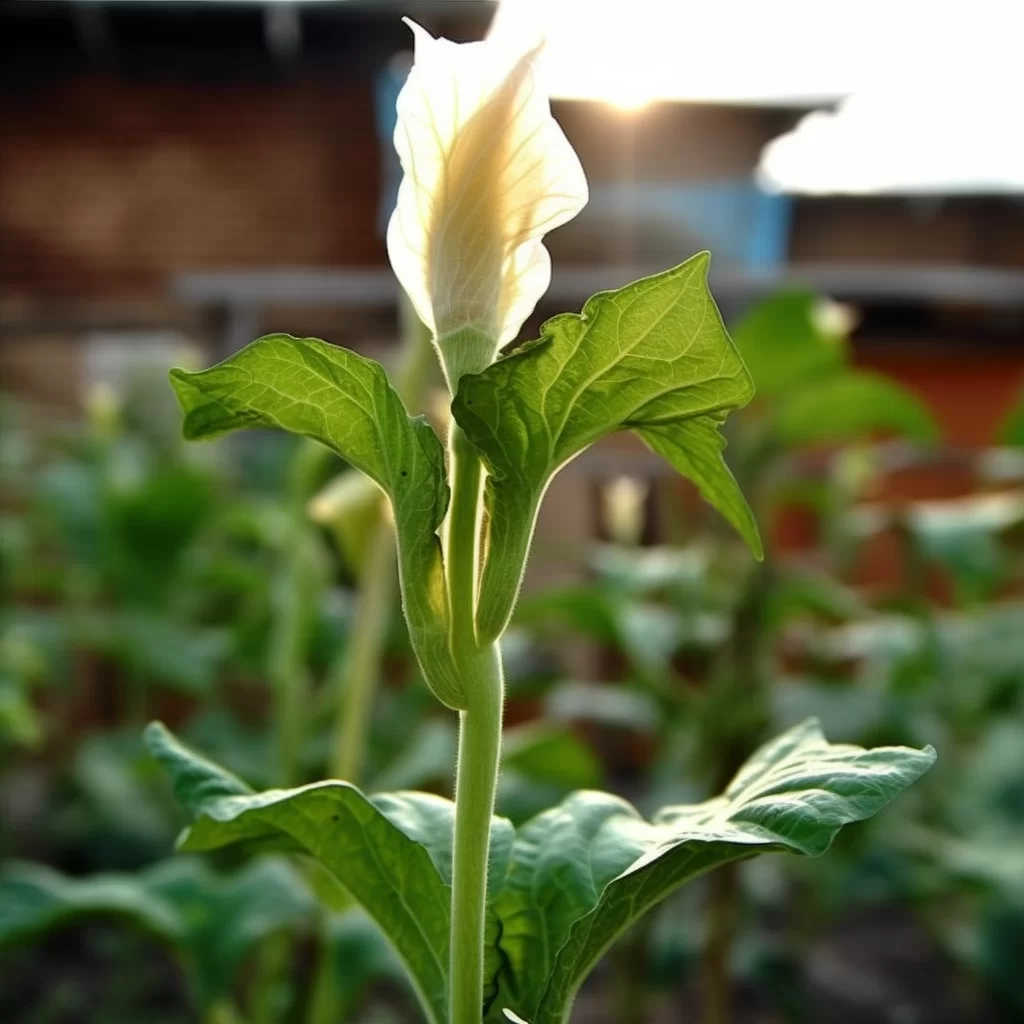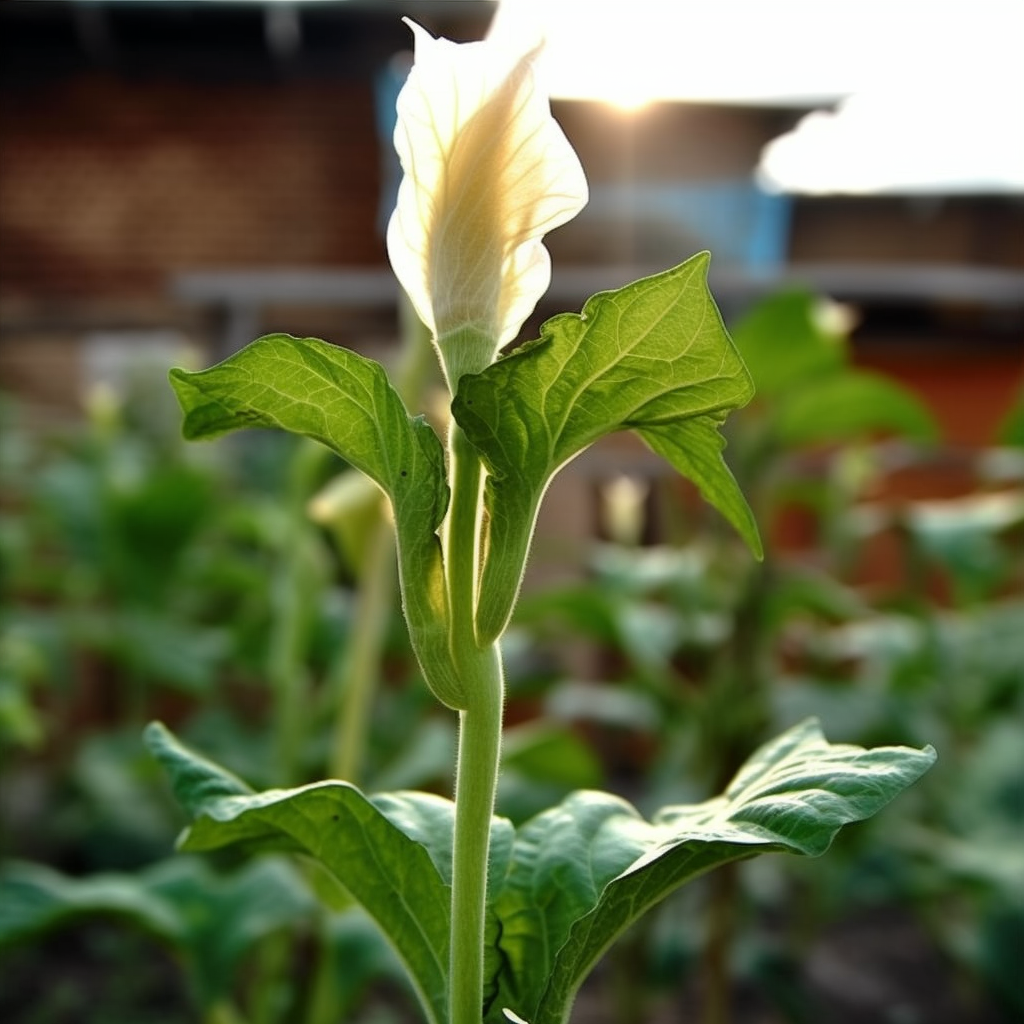Story of Day :
Datura Plant: Complete Guide and Care Tips
Are you sick of dealing with high-maintenance plants that demand constant attention and endless TLC? Well, my friend, it’s time to meet your new floral BFF – the datura plant! This stunning specimen goes by many names – devil’s trumpet or thorn apple, for example – and belongs to the nightshade family. Originating from Central and South America, this little guy is as easygoing as they come. So put away your watering cans and pruning shears because with a datura plant by your side, you won’t be needing them! In fact, we’re pretty sure this plant could survive a nuclear apocalypse.. .or at least a few weeks without water. Plus, not only is it low maintenance but it’s also an absolute stunner! With its beautiful trumpet-shaped flowers in shades of white or pink (depending on the variety), this plant will have all your neighbors green with envy (pun absolutely intended). So if you want to add some drama and beauty to your garden without breaking a sweat (or the bank), then look no further than our beloved datura plant.
.or at least a few weeks without water. Plus, not only is it low maintenance but it’s also an absolute stunner! With its beautiful trumpet-shaped flowers in shades of white or pink (depending on the variety), this plant will have all your neighbors green with envy (pun absolutely intended). So if you want to add some drama and beauty to your garden without breaking a sweat (or the bank), then look no further than our beloved datura plant.
Planting
Alrighty folks, listen up! If you’re lucky enough to live in USDA hardiness zones 9-11, then you’ve hit the jackpot because you can grow datura all year round in your outdoor gardens. But for those of you living outside these zones, fear not! You still have options. You can bring the datura indoors and turn your home into a lush jungle oasis or plant them as annuals outdoors during those warmer months. Trust me, your neighbors will be green with envy over your beauties. So don’t let a silly little thing like living in the wrong zone stop you from experiencing the magic of daturas – just get creative and find a way to make it work!
- The ideal time for planting seeds is in early spring when soil temperatures are at least 70°F (21°C).
- Sow seeds directly into well-draining soil about ¼ inch (6 mm) deep.
- Datura plants require plenty of sunlight, so choose an area that receives full sun exposure with some shelter from strong winds.
- Space seedlings at least 18-24 inches apart to allow enough room for growth.
Care Tips
Listen up, plant lovers! If you’re looking for a low-maintenance addition to your garden, look no further than the datura. This bad boy requires minimal care and attention – perfect for those of us who are more inclined to sit on the couch with a bag of chips than tend to our greenery.First things first, make sure your datura is getting enough sun. These babies love full sunlight and won’t take kindly to being shoved in a shady corner. And don’t worry about remembering to water them every day – they can survive drought conditions like nobody’s business.If you’re feeling extra lazy, skip the fertilizer and let nature do its thing. Daturas are adaptable little suckers and will thrive in most soil types without any extra help from you.Now, here’s where things get interesting. Daturas are actually known for their hallucinogenic properties (yes, really). So if you’ve got any particularly wild parties coming up, consider adding some datura leaves to the punch bowl (just kidding… kind of).All jokes aside though, these plants may require minimal care but they definitely pack a punch when it comes to beauty and intrigue. So go ahead and add one (or two or three) to your collection – we promise they won’t disappoint!
- Water regularly: Keep the soil moist but not waterlogged – overwatering can cause root rot. During hotter months, water daily or every other day depending on how dry the soil gets.
- Fertilize once a month: Use a balanced fertilizer during growing seasons (spring and summer). Daturas prefer nutrient-rich soil but avoid overfeeding or using high-nitrogen fertilizers as they can cause excessive foliage growth at the expense of flowers.
- Prune regularly: Remove any dead or damaged branches to encourage healthy growth. Cut back datura plants in the fall to promote fuller growth in the following year.
- Protect from pests and diseases: Daturas are susceptible to aphids, spider mites, and whiteflies. Check your plant regularly for any signs of infestation and treat with insecticidal soap if necessary. Additionally, avoid overwatering as it can cause fungal issues such as powdery mildew.
Uses
Oh boy, have you heard about the Datura plant? This bad boy has been around for centuries and is known to have some pretty wild uses among indigenous cultures. I’m talking about medicinal AND spiritual purposes, people! And get this: it contains alkaloids that can help with pain relief and asthma treatment. But wait, there’s more! It can also induce visions during religious ceremonies…talk about getting in touch with your spiritual side! However, before you go chomping down on those leaves, let me tell you something – this plant is no joke. Ingesting any part of it can be toxic to humans AND pets due to its hallucinogenic effects. So if you’re feeling adventurous and want to try out the Datura plant for yourself – think again! Stick to some good ol’ fashioned Tylenol for your headaches instead.
Oh my goodness, have you seen those daturas in the garden?! They’re like big ol’ trumpets just blaring their beauty all summer long! And get this – they come in all sorts of funky colors like pink, white, yellow and purple. It’s like a floral rainbow explosion up in there. No wonder these babies are prized possessions for any self-respecting gardener who wants to add some pizazz to their patch. Plus, with their long blooming season from summer all the way through fall, those daturas are the gift that keeps on giving!
Conclusion
Hey there, fellow plant lovers! Have you ever stumbled upon the datura plant? Let me tell you, it’s a beauty to behold. With its showy blooms and easy-care requirements, it’s the perfect addition to any garden. And let me just say, this plant is a low-maintenance diva – all it needs is some sunlight and well-draining soil, along with regular watering (but don’t overdo it – no one likes a soggy datura). But wait! The fun doesn’t stop there. Did you know that this versatile beauty can also thrive indoors? That’s right – bring the outdoors inside with your very own datura plant. Just be mindful of where you place it – keep children and pets away from this powerful little number for everyone’s safety. Trust us on this one – we want everyone to enjoy their gorgeous datura without any accidents or mishaps. So go ahead and add a pop of beauty to your garden or living space with the stunning datura plant!
